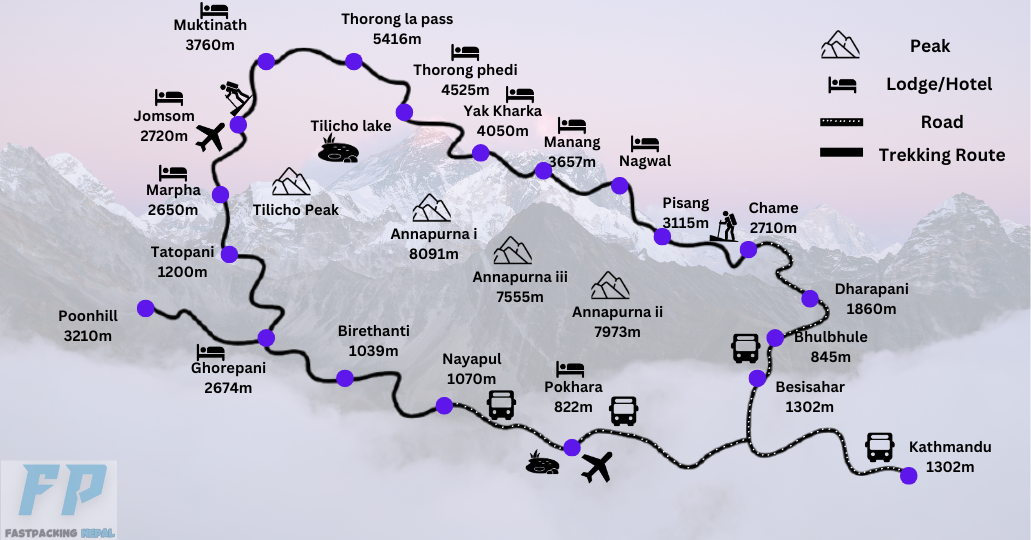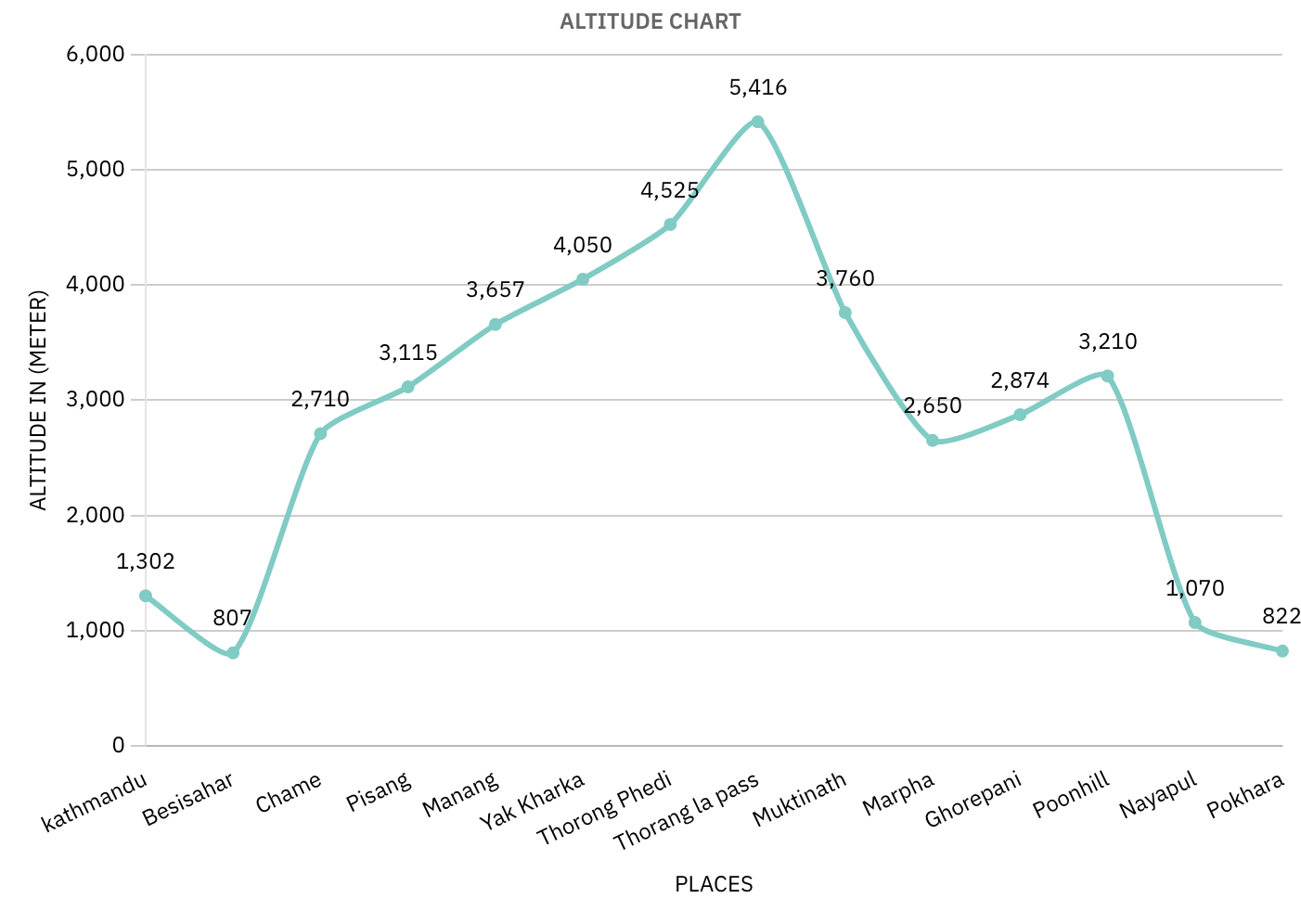Annapurna Circuit Fastpacking
Overview
The Annapurna Circuit Fastpacking is one of the best long treks on the Earth, that takes hikers around the entire Annapurna Mountain Range over 14 days. The Annapurna circuit trail starts from 800 meters up to 5416 meters in elevation passing through diverse landscapes like forests, fields, rocky ridges, and exotic destinations.
The major fastpacking highlights of Annapurna Circuit include exploring settlements of differing cultures, learning about the ancient traditions of Nubri and Lubra people, visiting famed sites like Muktinath, Jomsom, and Poon Hill, and crossing Thorang La Pass – one of the highest passes globally. An additional major highlight along the trail itself is Tilicho Lake, which at 4919 m is the highest glacier lake in the world. By trekking to Tilicho Lake as part of completing the entire Annapurna Circuit route, adventurers can experience this spectacular destination as an integrated part of what is regarded as the world’s best long trek.
Fastpacking Description
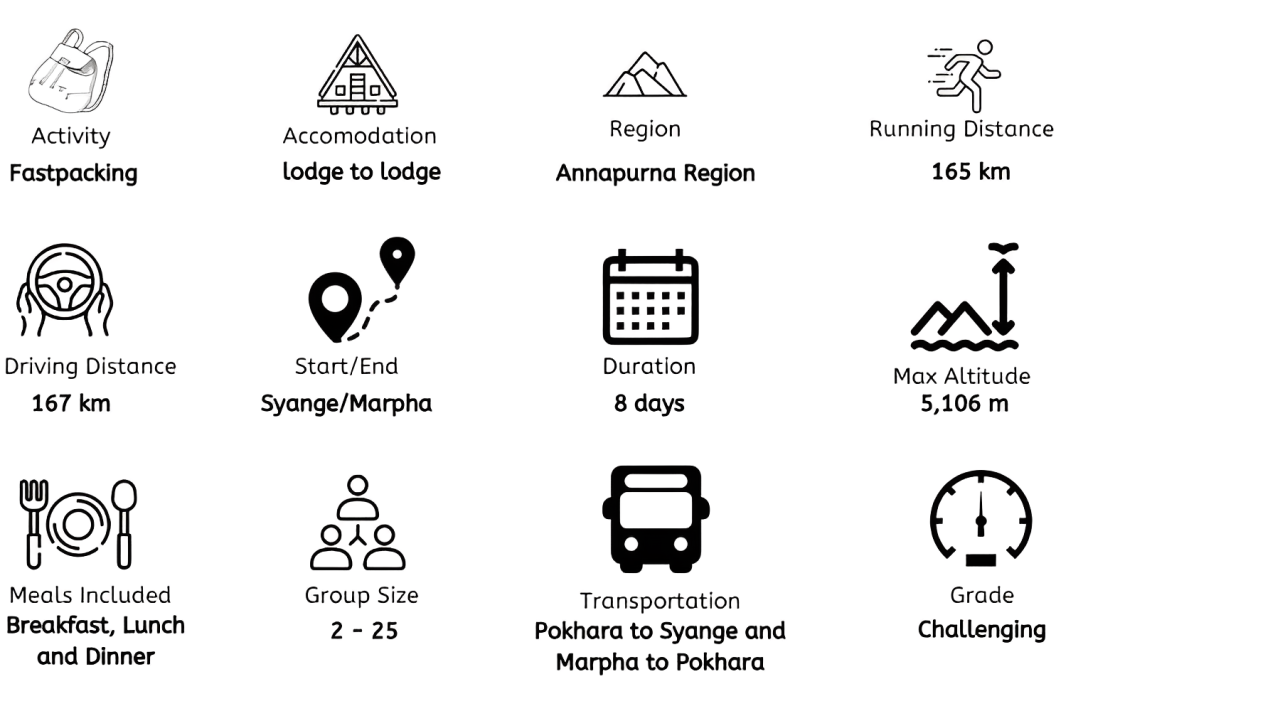
Fastpacking Annapurna Circuit Key Highlights:
- Conquer the impressive Thorung La Pass (5,416), one of the highest mountain pass in the world
- Reach Tilicho Lake at 4,919 m, one of the highest glacial lakes in the world
- Visit ancient Buddhist monasteries, stupas, and sculptures along the way
- Experience the diverse cultures and traditions of Nepali and Tibetan communities
- Enjoy rhododendron forests and potential exotic wildlife sightings like Snow Leopards
- Complete the iconic Annapurna Circuit at a fast pace with a lighter pack to see more in a limited time
- Take on physical challenges like high-elevation passes and ascents through some of the world’s most stunning landscapes
- Fastpack on a unique off-the-beaten-path adventure where the thrill comes from pushing past perceived limits
- Reward yourself with a greater sense of confidence and an expanded comfort zone after tackling an intense, fast-paced trek.
Annapurna circuit fastpacking:
Annapurna Circuit Fastpacking in Spring:
(March to May)
- Moderate temperatures and clear skies
- Rhododendron forests in full bloom
- Some snow on Thorung La pass
- Occasional rainfall in lower regions
Annapurna Circuit Fastpacking in Autumn:
(Mid-September to November)
- Clear sky, warm days, cold nights
- Throng La Pass is usually snow-free
- Post-monsoon trails can be muddy
- Harvest festivals in villages
Annapurna Circuit Fastpacking in Summer:
(June to August)
- Warm but wet days with leeches
- Landslides and risks of avalanches
- The challenge for experienced fast packers
- Isolated trails good for pure adventure seekers
Annapurna Circuit Fastpacking in Winter:
(December to February)
- Heavy snowfall, high avalanche risk
- Extreme cold at higher passes
- Thorung La may be impassable due to snow
- Appeal only for hardcore fastpackers
- Requires extensive gear and guidance
Annapurna circuit fastpacking itinerary
Shorter Itinerary:

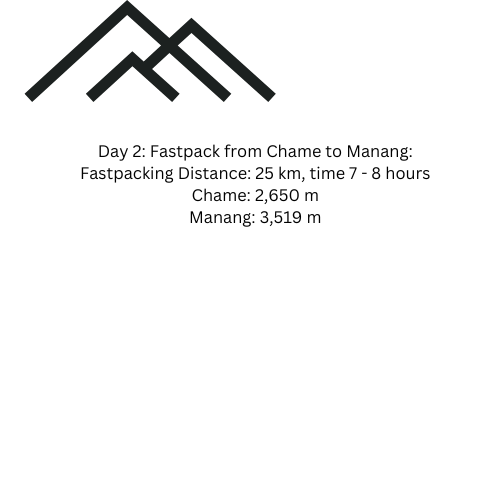
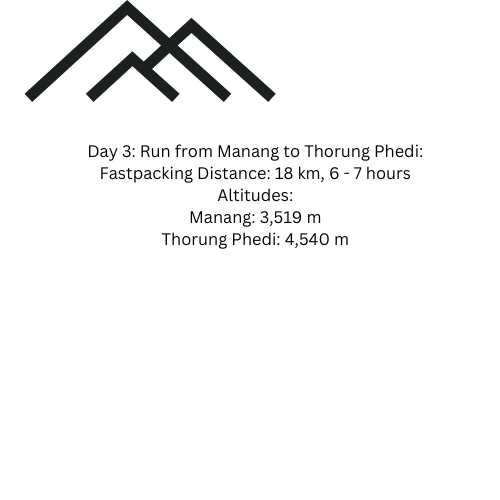
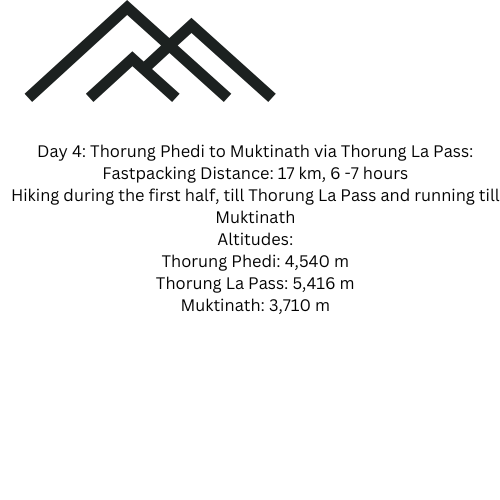
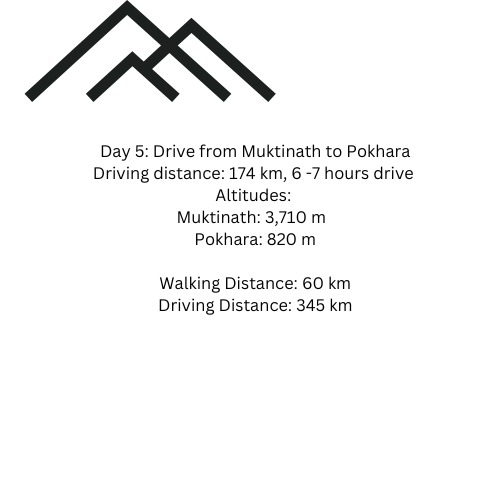
Longer and challenging itinerary:
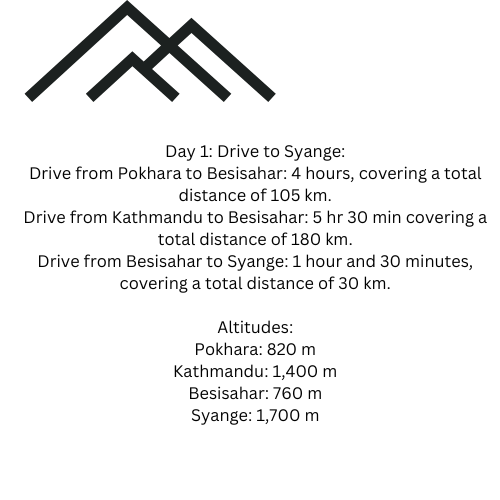
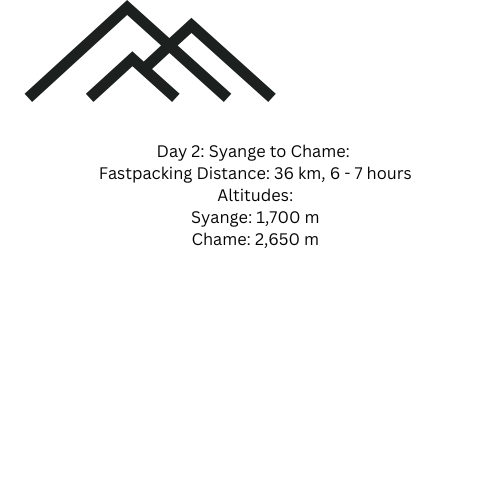
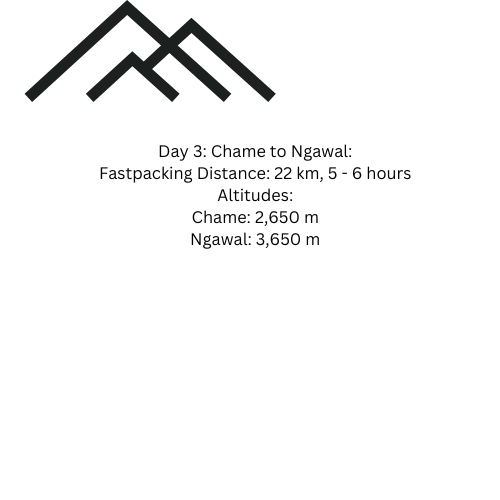
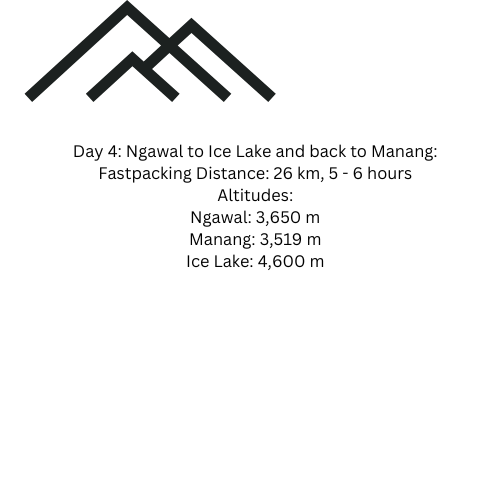
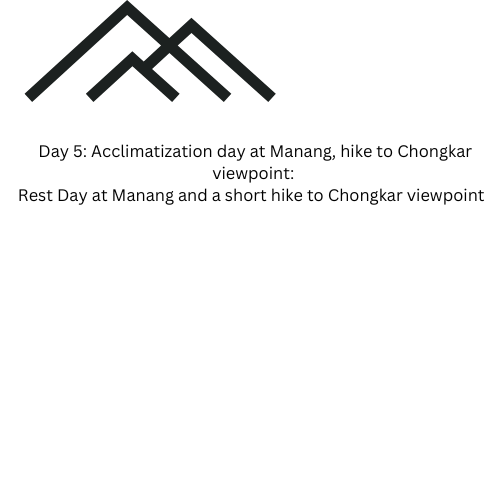
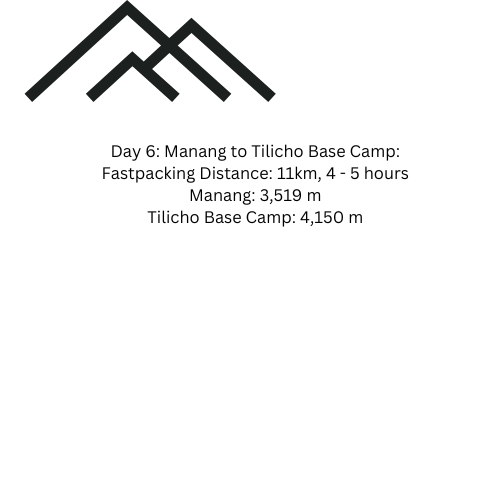
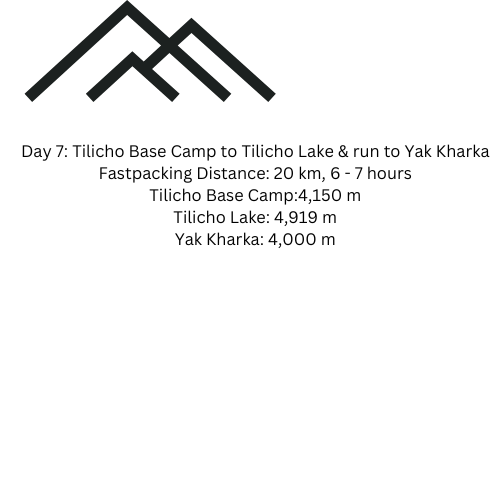
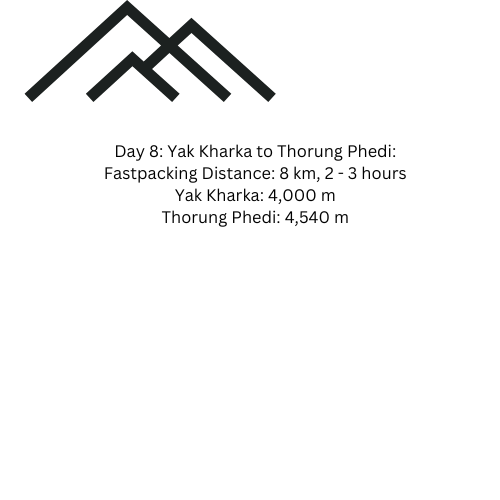
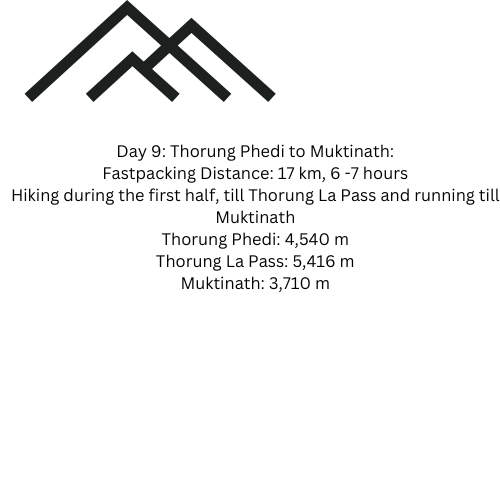
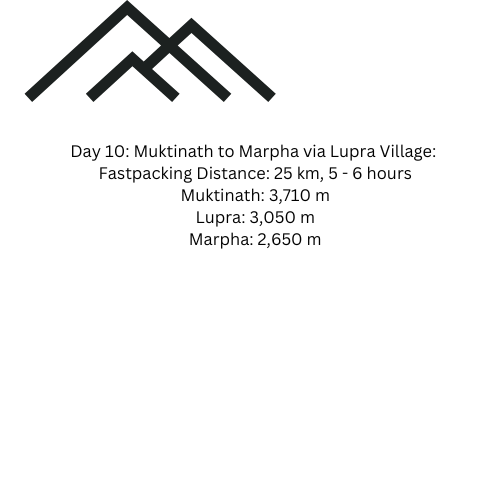
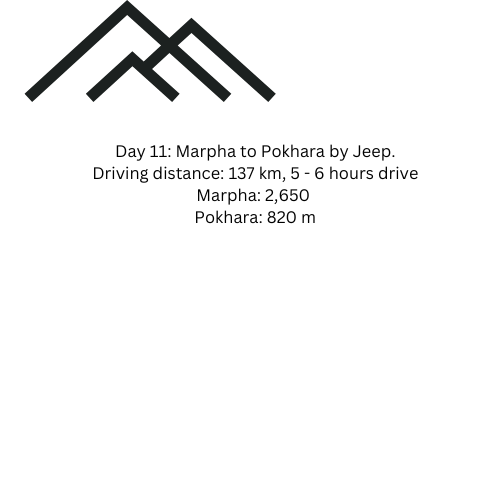
Fastpacking Annapurna Circuit Gears and Accessories
Clothing top:
Sunglasses
Beanie
Sunhat
Sunscreen
Bandana
Headlamp or Flashlight
Clothing bottom:
Long sleeve and short sleeve shirt, merino wool or synthetic.
Bring a light puffy jacket with a hood and a down jacket.
Light rain shell and wind shell jackets.
Running shorts, Tech pants , Puffy pants
Sleeping bag
Tech pants and a pair of long underwear instead.
Many pairs of Underwear
Feet:
Normal trail running shoes
Pack 2-3 pairs of socks + one thicker pair for around camp.
Some chemical warmers for when we cross the high altitude passes (usually 3-5 hours).
As we are crossing a 5000m+ pass, pack crampons or microspikes.
Sleeping:
Sleeping Bag for -20°C
Sleeping Liners
As we will sleep in tea houses we don’t need to camp.
Miscellaneous
A 30l pack for most of our adventures should be more than adequate.
Water bottles and bladders.
Travel medicines.
Set the backup with your medicines.
Personal hygiene kit.
Pocket money Nepali cash.
Passport or photocopy of passport.
Emergency contact sheet.
Compass. One with a sighting mirror is best!
Physical Preparation and Training:
Endurance
- Build a solid aerobic base by training for at least 4-5 days a week for 30-90 minutes working up to logging miles/hours on feet through running, hiking, cycling, or using the treadmill at an incline.
- As the trek approaches, begin implementing longer workouts (2-4 hours) carrying weight in your daypack while ascending steep hikes or stairs to simulate trail conditions.
- On terrain, the target covers 8-12 miles daily while ascending to 1,000m to train muscles to handle Nepal’s steep mountain trails.
Strength
- Complement endurance workouts with lower body and core strengthening 2-3 days a week. Focus on squats, lunges, deadlifts, planks, and toes to bar. Carry weights/resistance for added difficulty.
- Building leg and glute power helps propel each step while core fitness supports overall posture for carrying packs and prevents injury.
Balance
- Practice balancing poses like single-leg deadlifts and pistol squats which mimic stabilizing steps on uneven mountainous ground.
- Agility drills like lateral hops to build stability are helpful for micro-adjustments placing boots on narrow Himalayan trails.
Running practice
- Practice running with the shoes you are planning for the fastpacking journey.
- Fill your backpack with your clothes, sleeping bags, and other necessities during your training.
- Make sure you have practiced with everything you need during fast packing, just mimic the conditions at least once.
Fastpacking Annapurna Circuit Trek Map and Altitude Chart
